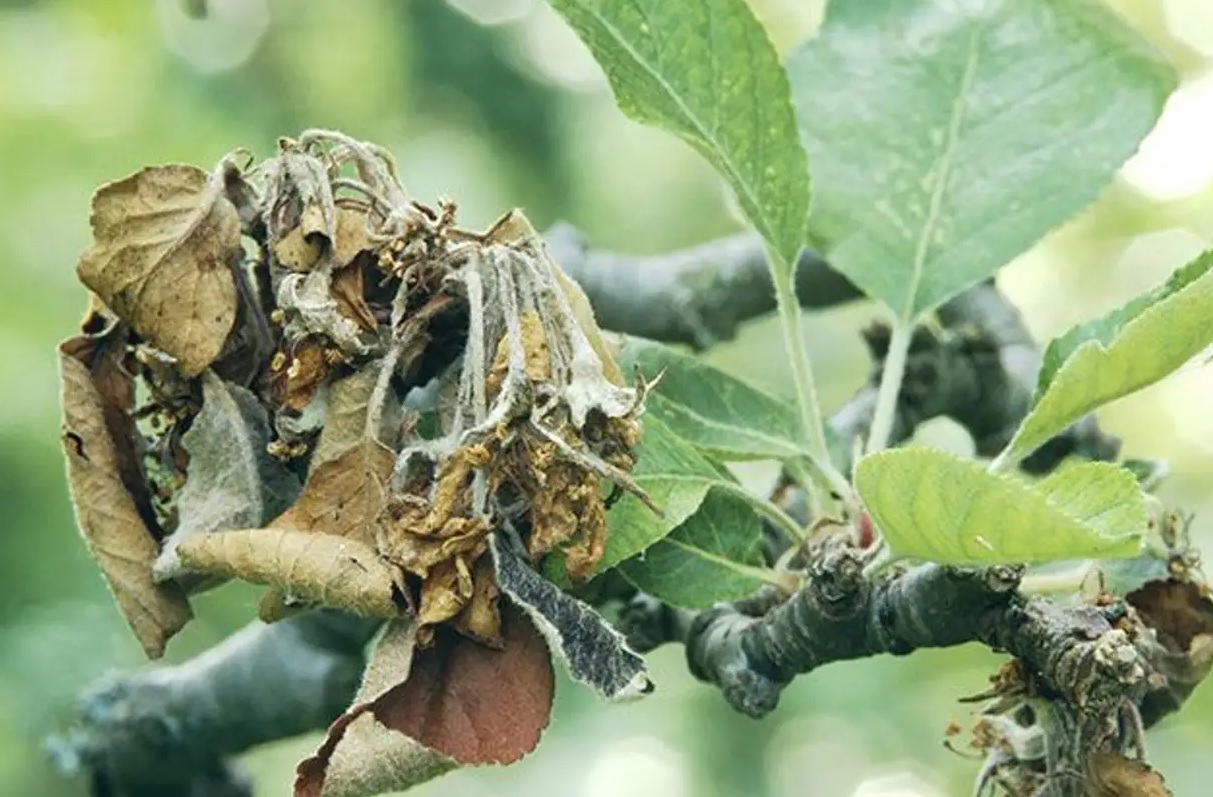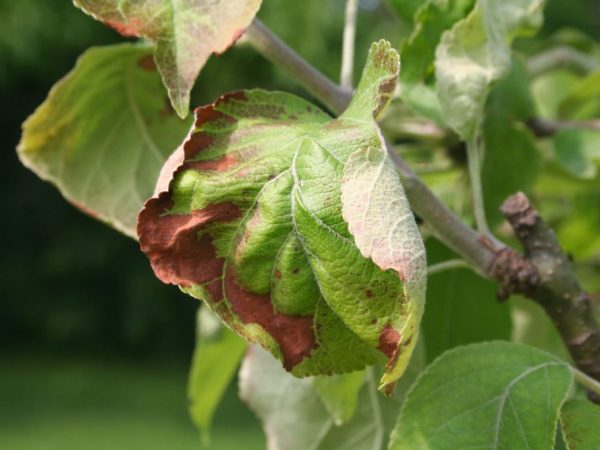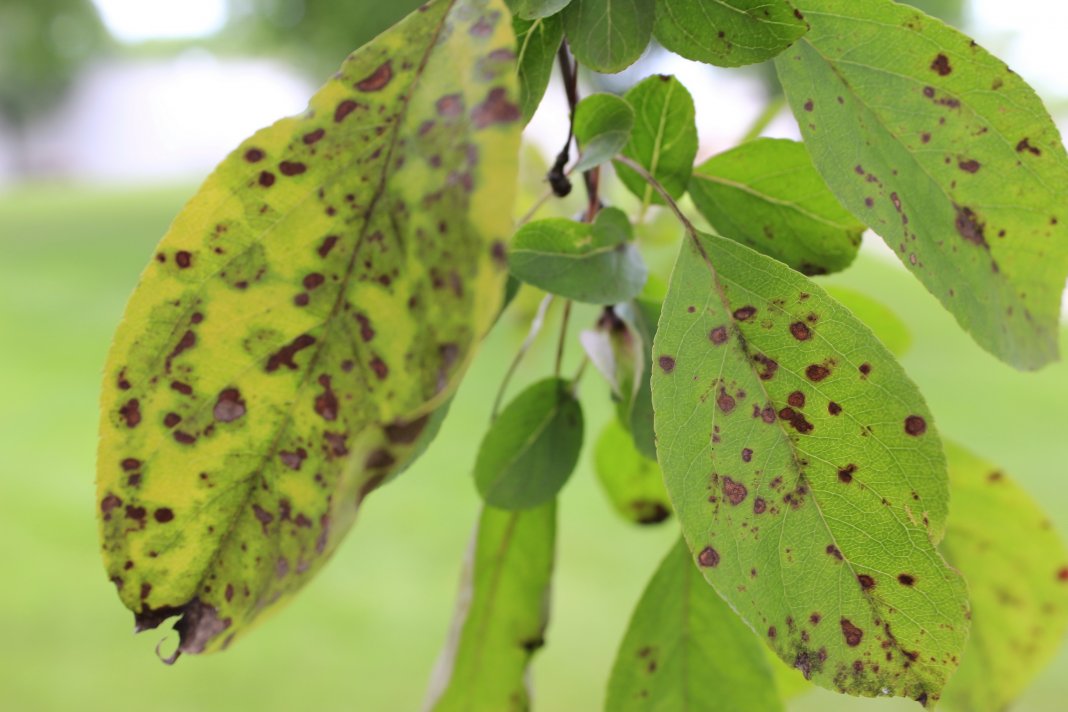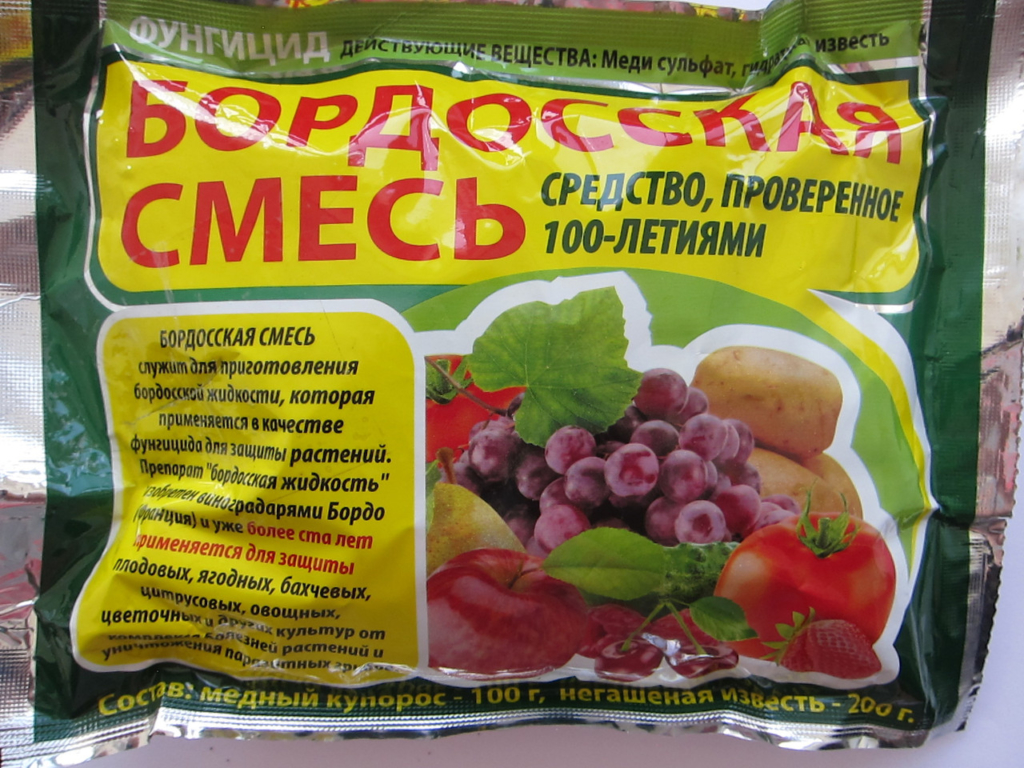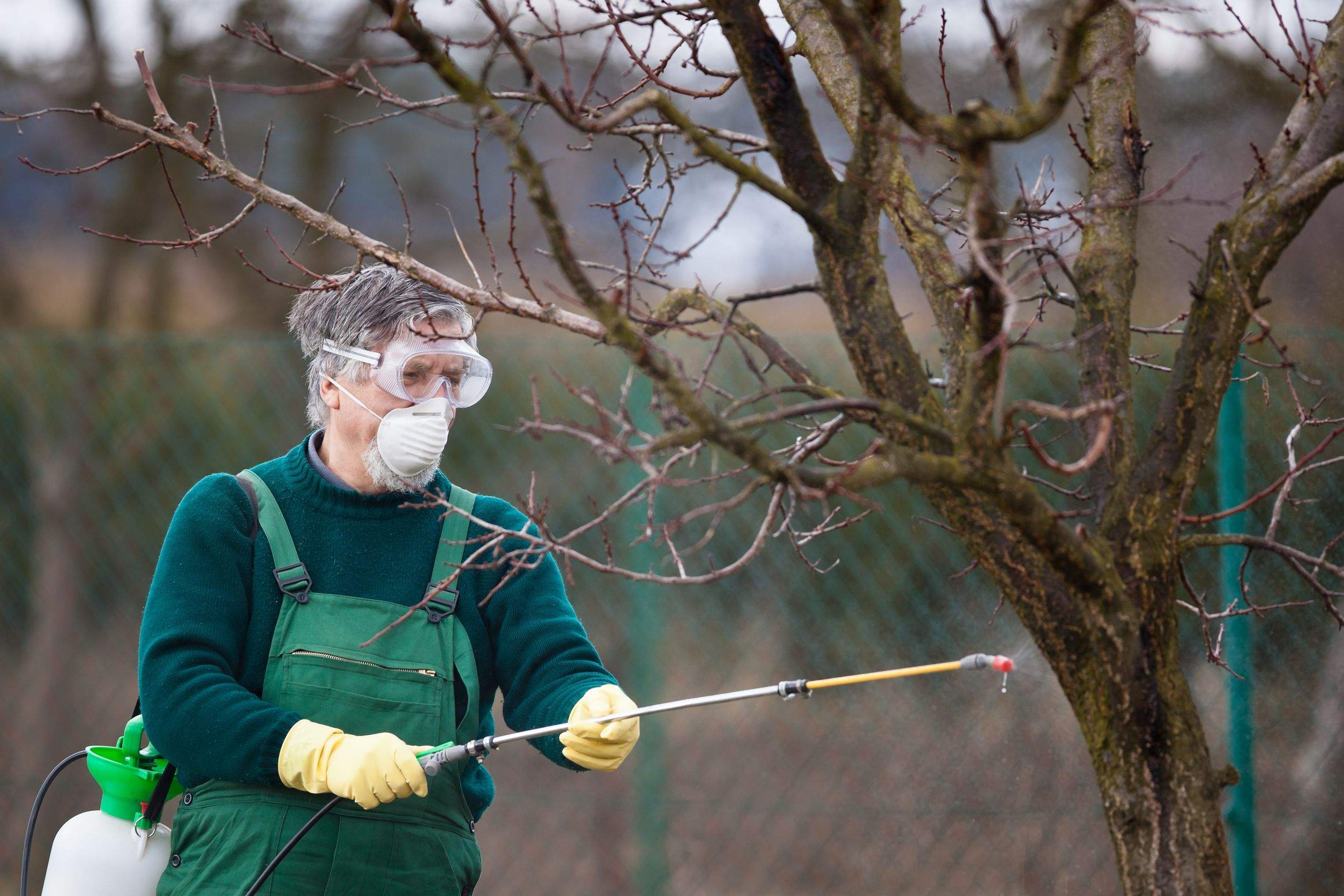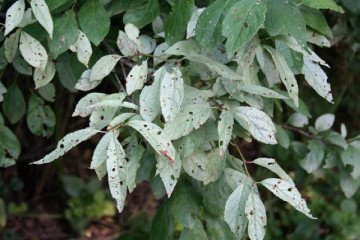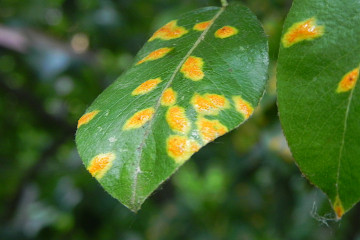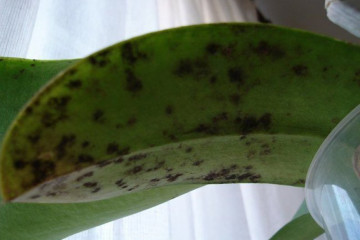Black spots on the leaves of an apple tree: how to treat a tree
Content:
Often, gardeners notice that black dots appear on apple leaves. This sign may indicate temperature changes, as well as the development of diseases. Therefore, it cannot be ignored, otherwise you should not count on a good harvest. In order to properly carry out the treatment, you must first establish the reason why the leaves on the apple tree turn black. Otherwise, all efforts may be useless. You should also familiarize yourself with what preventive measures will help protect the garden from this scourge in the future.
Signs of the disease
In case of infection of the apple tree, in addition to black dots, there are other accompanying signs. Therefore, it is initially necessary to conduct a thorough inspection of the tree. This will reveal the extent of the spread of the infection, that is, it affects only the leaves, or also branches, bark, fruits. This will make it possible to exclude the effects of cold temperatures.
Additional symptoms that indicate an infection of the apple tree:
- cracks in the bark;
- necrotic areas on leaves, branches, trunk;
- shedding of the ovary;
- rotting fruit on the branches;
- drying out of shoots;
- premature leaf fall.
Causes of dark spots
Black spots on the leaves of an apple tree can appear as a result of the development of a fungal, viral and bacterial disease. Each of them is characterized by accompanying features. Therefore, you should study all possible diseases that cause such a symptom so that in the future you can properly fight the disease. It can also be due to a lack of nutrition.
Bacterial burn, necrosis or bacteriosis
A common apple disease that often enters the garden with new seedlings. A fire blight can be detected already during the flowering period of the tree. At this time, black areas appear on young leaves. Subsequently, the plates twist and dry out, but at the same time remain on the branches.
The disease also spreads to inflorescences. As a result, they can turn black and crumble. The fruits are tied, but little. Dark dots also appear on them, which subsequently increase in size. Therefore, the apples dry out, but remain on the tree until winter. The bark also suffers from fire blight. It softens, whitish spots appear on it, similar to mold.
Chlorotic annular spot
This is a viral disease. It can be identified by small annular yellow spots. Subsequently, they turn black, they become larger, but the size does not increase. As a result, the development of the tree stops.
Chlorotic ring spot affects the entire aerial part of the apple tree. It is useless to treat the disease, so it is necessary to pay special attention to preventive measures.
Lack of magnesium and manganese
The lack of these components in the soil can also be the reason for the appearance of black spots on the leaves of the apple tree. With a lack of magnesium, yellow spots initially appear between the veins, then they turn black. The lack of this element negatively affects the fruits. Apples grow small and not tasty.
Manganese deficiency can also present with a similar symptom. In this case, the edges of the plates begin to turn yellow initially, and subsequently the leaves completely. As a result, they turn black, dry out, fall off.
Sooty bloom
This fungal disease is carried by insects, namely aphids. Initially, small reddish dots appear on the leaves of the apple tree, and then the edges are curled, which indicates an invasion of pests. After that, all the plates of the tree are covered with a black bloom, which resembles soot. It interferes with the process of photosynthesis. As a result, the leaves dry out and fall off.
Powdery mildew
This fungal disease appears in June. You can identify it by the white spots on the leaves, which quickly increase in size and merge. This prevents the leaves from absorbing oxygen and light. As a result, they turn black and fall off.
Brown spot, phyllostictosis
With this disease, reddish spots initially appear on the leaves of the tree, which subsequently increase in size and darken. The nutrient medium for the fungus is cell sap. This ultimately leads to disruption of metabolic processes in the tissues and causes the appearance of necrotic areas. Against this background, premature leaf fall occurs.
Brown spot spreads rapidly during wet, windy weather.
Root burn
Improper use of fertilizers can also provoke the appearance of black spots on the leaves of the apple tree. Often, root burns appear in young seedlings. In this case, blackened leaves initially appear at the top.
This is due to the fact that many inexperienced gardeners put fresh manure into the planting pit. And this is absolutely impossible to do, since in the process of fermentation, it releases gases that prevent the rooting of the tree. In addition, overheating it takes place at a high temperature, which leads to burns.
You can save a seedling only by replanting in a new place in compliance with all the rules of this procedure.
Milky shine
Black spots on leaves and apples can also appear with a milky sheen. This fungal disease can develop against the background of mineral starvation, with sharp temperature jumps, due to freezing of the tree, as well as with increased acidity in the soil. Initially, light spots appear on the leaves on the south side of the crown, and then a dark pearlescent sheen appears on the branches, which spreads quickly.
As a result, the disease affects the branches and fruits, which begin to crumble en masse. If it penetrates into the skeleton of a tree, then the apple tree dies.
Scab
This fungal disease affects not only the apple tree, pear, but also other fruit trees. Moreover, in each plant it is caused by a different pathogen. In the absence of control measures, scab can destroy up to 100% of the crop.
The first signs of apple cider fungus can be seen when the leaves open. They become covered with rounded dark spots, which increase significantly in size over time. In the future, the fungus passes to flowers, as a result of which they do not form an ovary.
With further progression, the scab spreads to the fruit. As a result, black spots appear on the apples that resemble warts.They gradually increase and form large necrotic areas. Affected fruits grow small, deform and become covered with cracks, they cannot be eaten. Spores of the fungus overwinter in cracks in the bark.
Gray rot
This fungal disease is very common in stone fruit crops. The first signs of gray rot can be seen in the vein when the buds open. This leads to their premature wilting.
Subsequently, the disease spreads to shoots and leaves, on which black spots appear, giving the impression of a burn. This causes them to dry out.
Subsequently, gray rot may appear on the fruit in summer. Cool, wet weather can provoke its development.
Apple Mosaic
It is a viral disease that spreads with the pollen and seeds of the tree. Initially, it appears as light ring spots on the leaves, which subsequently darken. You can see them at the initial stage of the growing season. Mosaic has a negative impact on the development and fruiting of the apple tree.
Late blight
This disease affects not only nightshade crops, but also apple trees. Moreover, in the latter, it destroys the root collar. The disease initially begins with a small area of rot in the graft area. And then it progresses and causes damage to large areas of the cortex.
In the absence of adequate control measures, late blight can spread to the vascular system of the apple tree. As a result, it affects shoots and fruits that have fallen or are located in the lower part of the crown.
Against the background of metabolic disorders, brown spots appear on the leaves of the tree, gradually increasing in size. Affected apples appear watery but retain their shape. You can check if you cut such a fruit. Inside it, with this disease, there will be an intense russeting of blood vessels.
Stagnant moisture
Black dots on leaves and apples are a sign that may indicate stagnant moisture in the soil. The problem can arise due to the proximity of groundwater, which flushes nutrients from the root system. It can be solved only by transplanting a tree to a new place.
Waterlogging can also occur when growing an apple tree in clay soil. As a result, the access of air to the roots is disrupted, and this leads to disruption of metabolic processes. In this case, it is necessary to add sand and peat to the upper layer of the root circle, 10 kg per 1 sq. m. You should also make a ditch along its edge to drain excess water.
How to deal with this problem
If even small dark spots appear on the leaves, it is necessary to treat the crown of the tree with special fungicides. This will strengthen the tree's immunity and prevent further spread of the disease. But before you spray the tree, you should, if possible, remove the affected areas and burn them.
However, this method is not able to completely guarantee that the disease will not reappear. Therefore, in the future, the problem can be avoided only if preventive treatments are carried out several times annually per season.
What drugs to use
For the treatment of fungal and bacterial diseases of the apple tree, you can use Bordeaux mixture. This preparation contains copper sulfate, which has a detrimental effect on pathogens. You can use it no more than 5 times per season. In this case, the concentration of the solution must be changed to avoid burns.
Chemicals should also be used to fight disease. Their advantage is that they have a systemic effect and penetrate into all parts of the tree.Therefore, they provide long-term protection and are not washed off by rain.
Effective chemicals:
- "Raek";
- Horus;
- "Speed".
But the disadvantage is that they can be addictive to pathogens. Therefore, during repeated treatments, chemical preparations must be alternated.
Preventive garden treatments
In order to prevent the appearance of black spots on the leaves of the apple tree, it is necessary to carry out preventive treatment of the garden several times per season. At the same time, it is important to observe the order of application of the preparations, as well as the timing of spraying, otherwise the effort spent may not bring the desired result.
In the spring
During this period of the year, spraying should be carried out at the stage of bud swelling, which usually occurs in mid-April. For processing, use 3% Bordeaux mixture or "Horus". You need to spray the crown, trunk and root circle.
In summer
At this time of the year, you need to spray the apple tree during the period of bud extension and after flowering. To do this, use 1% Bordeaux mixture, "Raek" or "Speed". It is necessary to process the entire crown of the tree.
In autumn
In the autumn, spraying should be carried out after leaf fall. At this time, it is recommended to apply a 3% Bordeaux mixture or "Horus". Processing during this period helps to destroy wintering fungal spores and increases the tree's resistance to unfavorable external factors.
Black spots on the apple tree indicate a problem. Therefore, this sign cannot be ignored, as it can significantly worsen the situation. After all, the sooner the reason for their appearance is established and the treatment is carried out, the more chances are to get a good harvest and prevent the spread of the disease throughout the garden.

